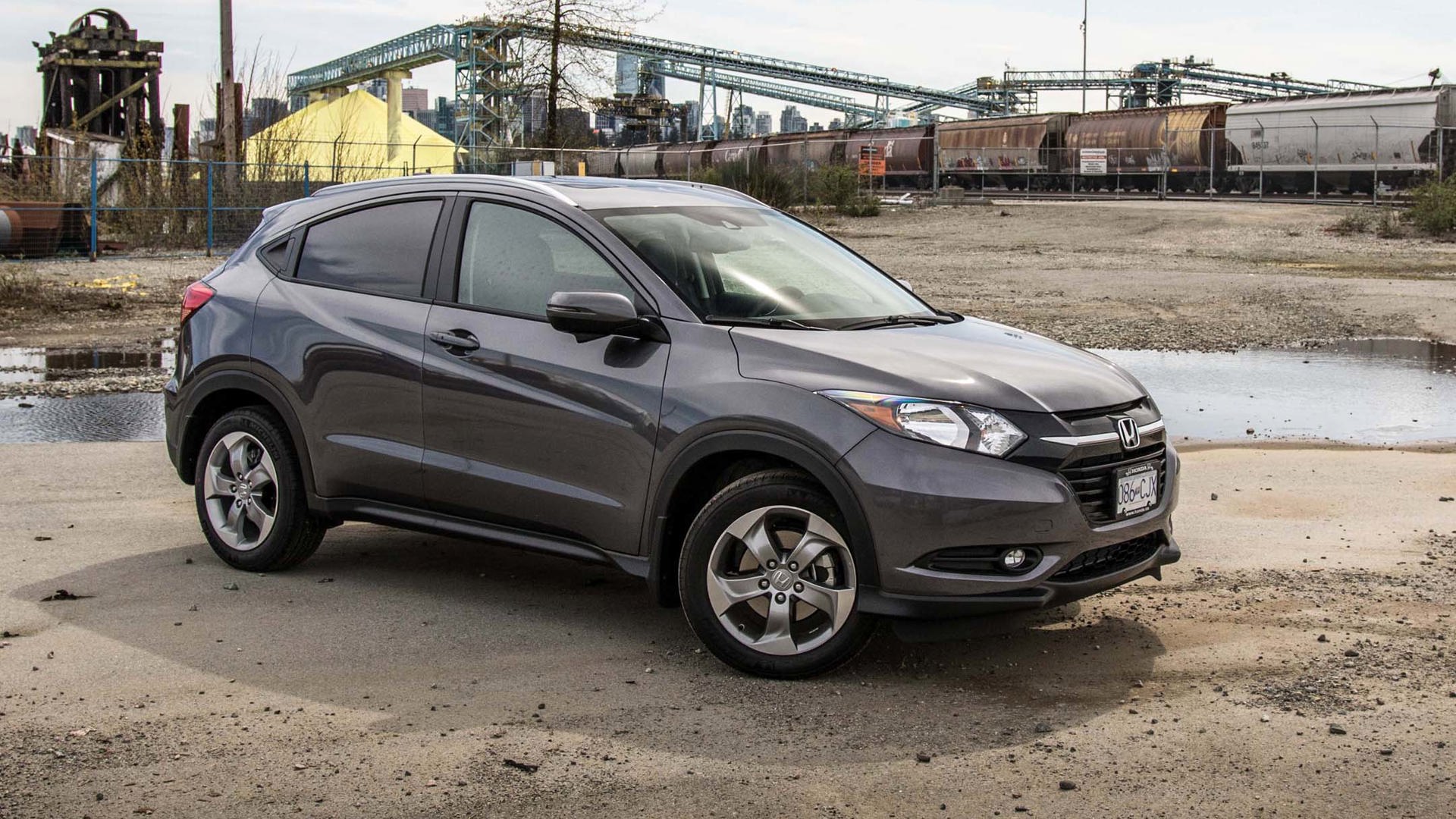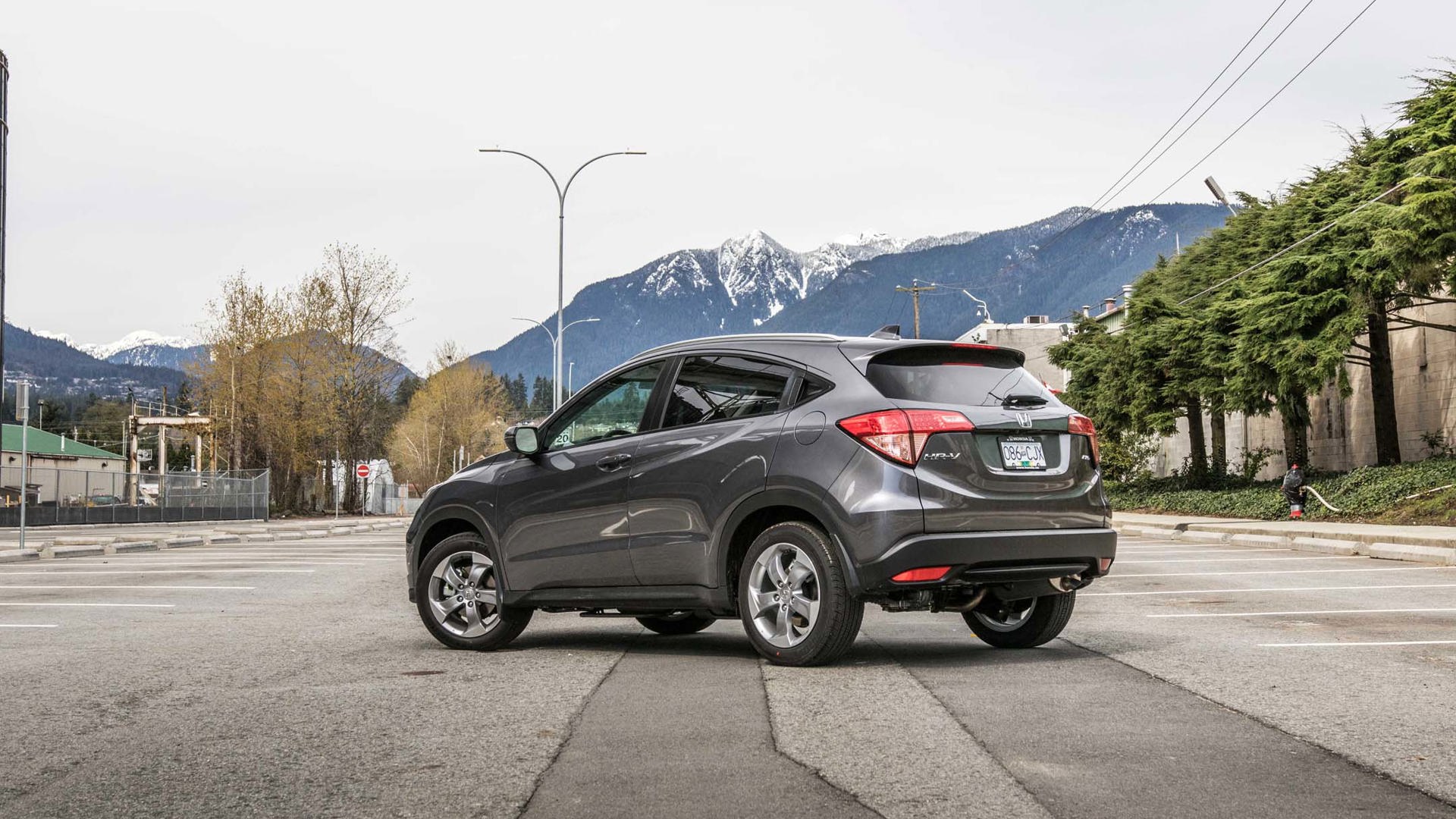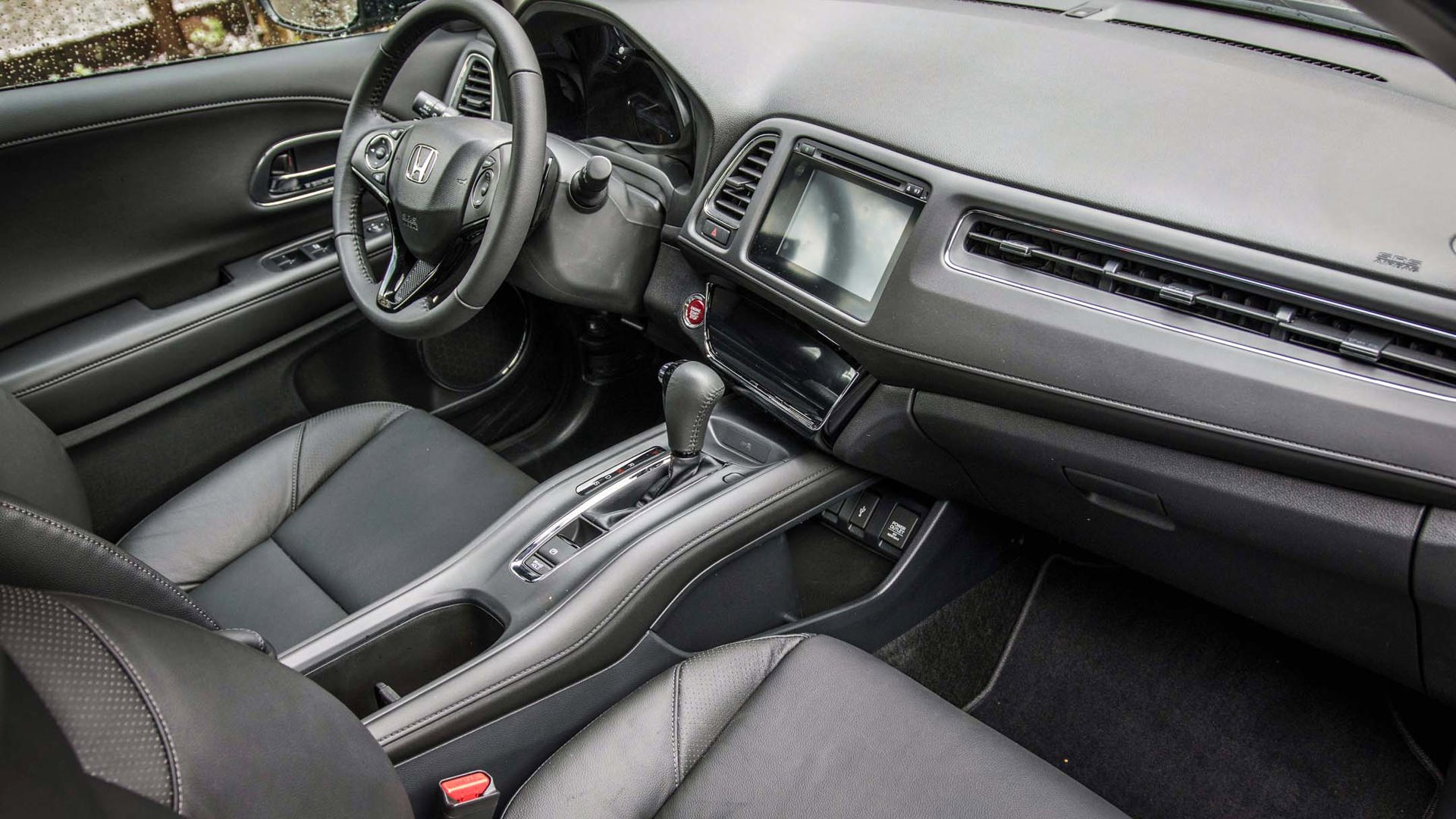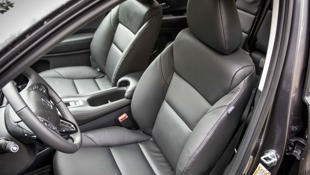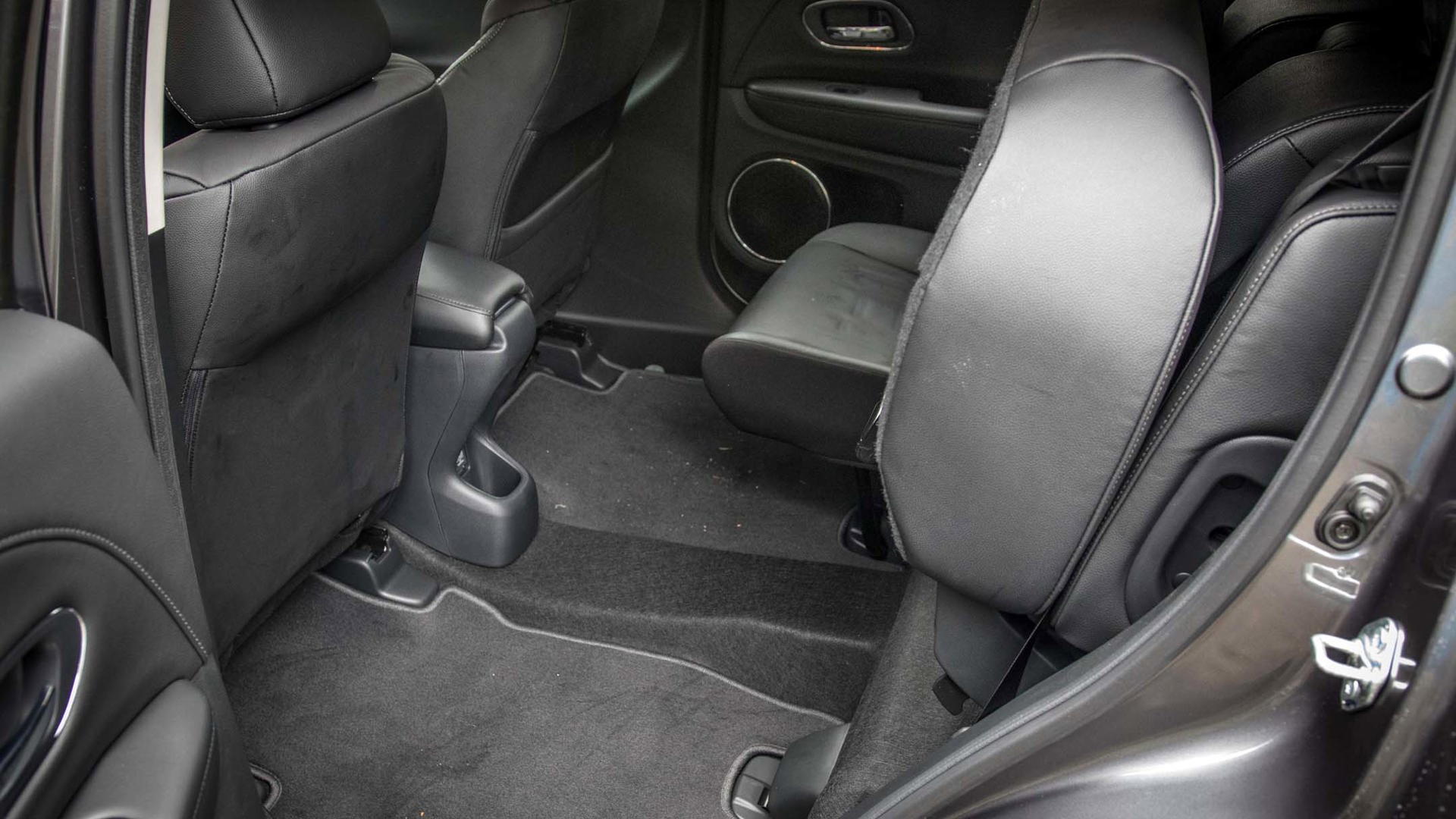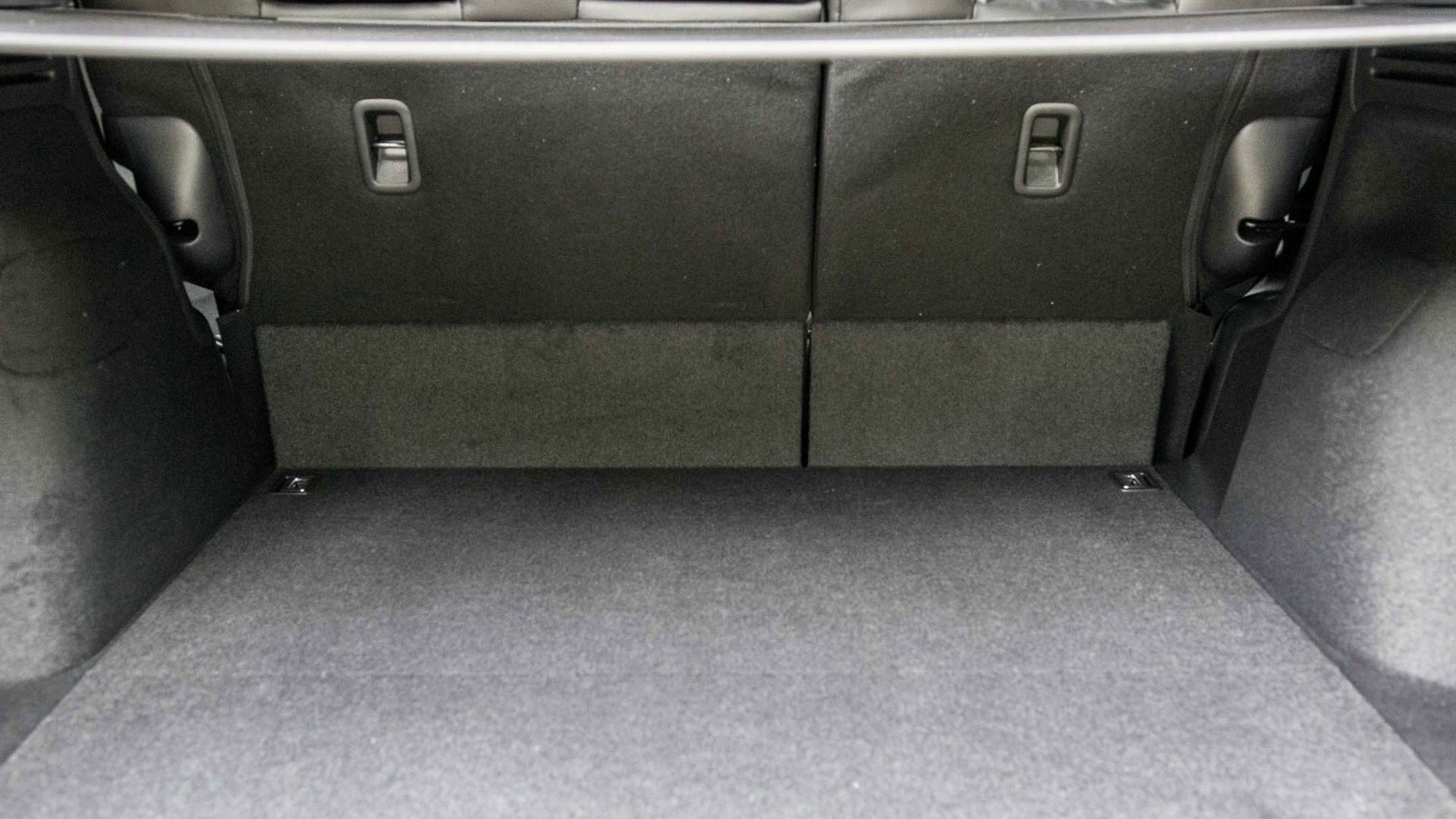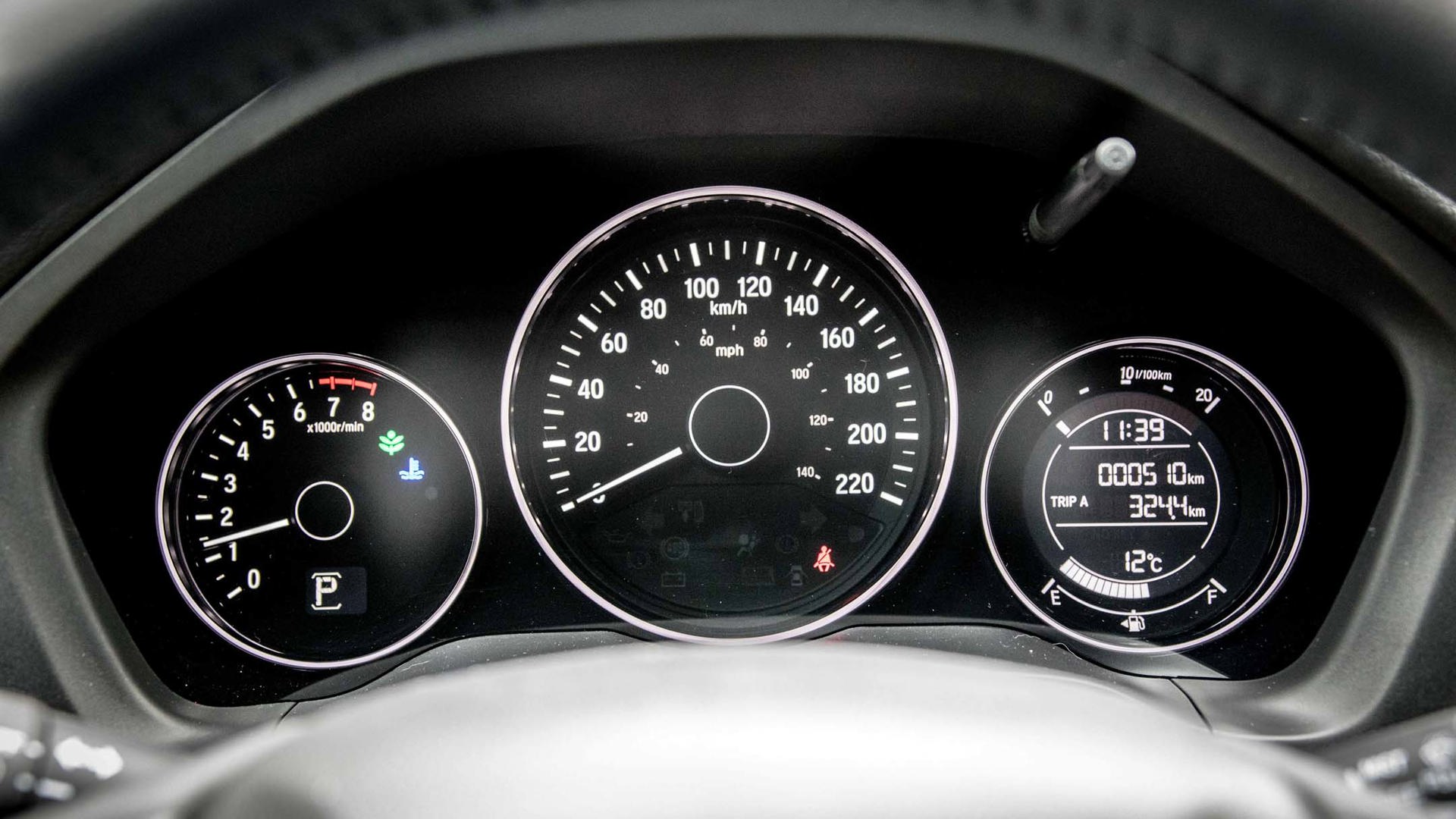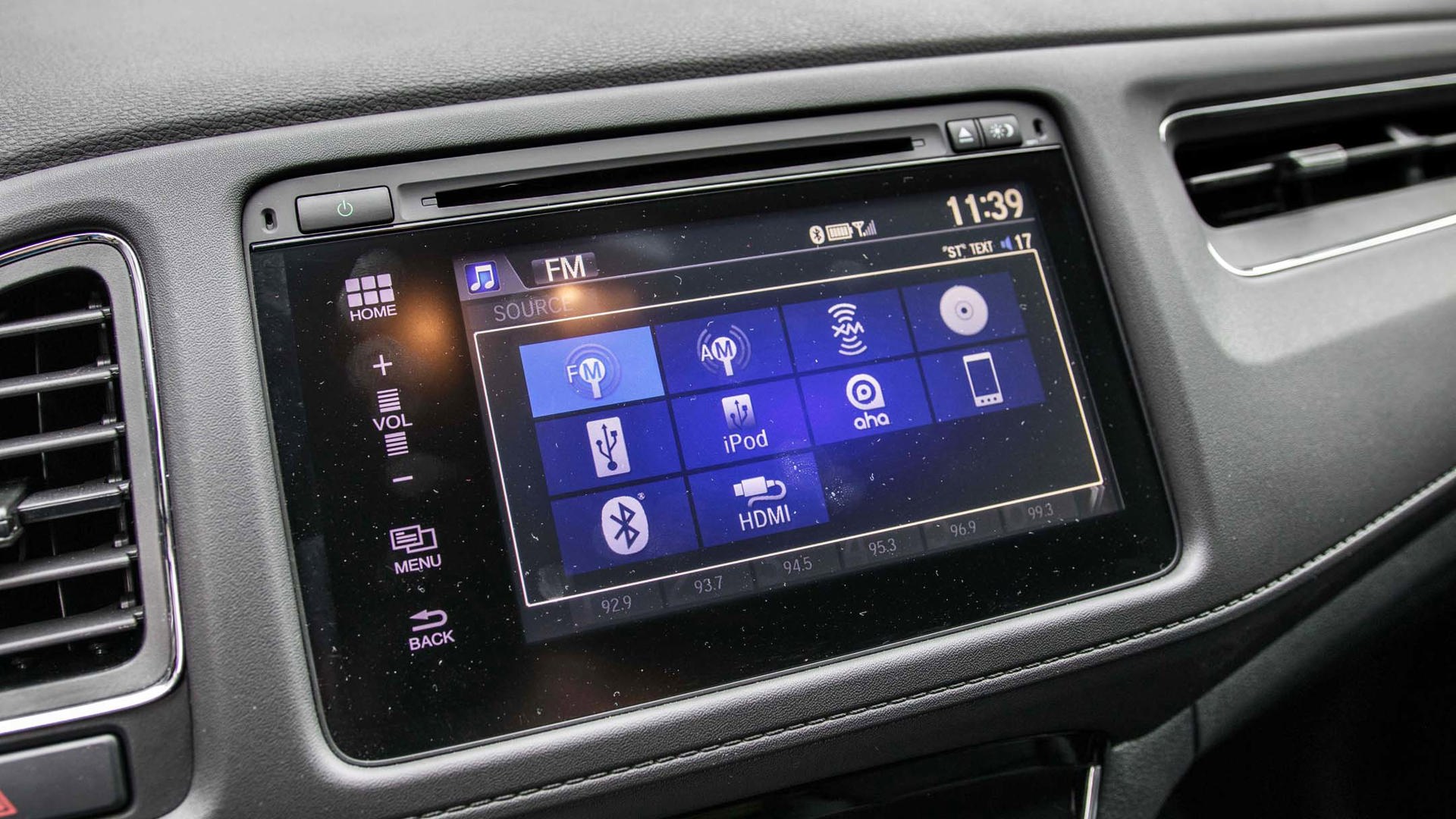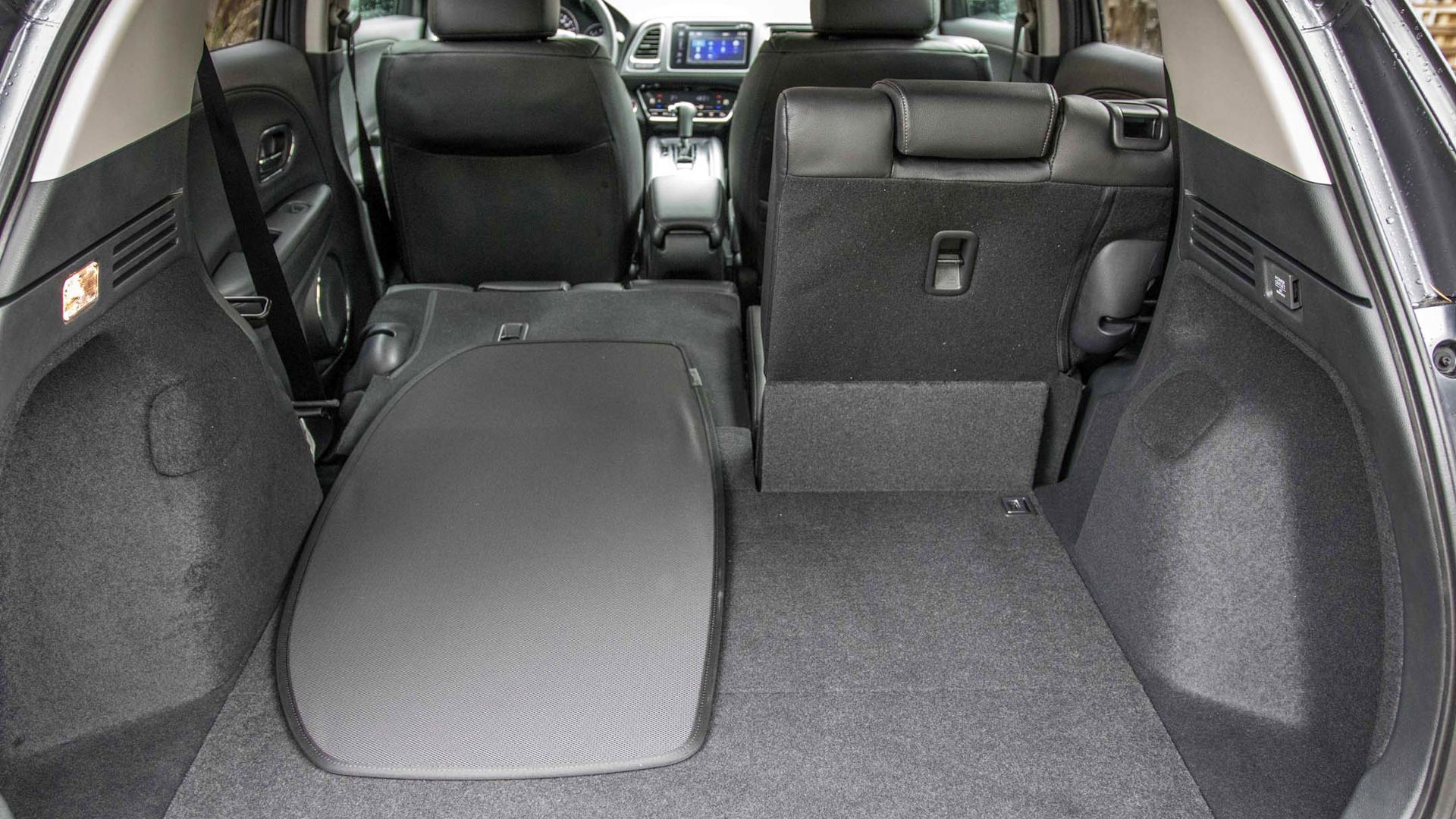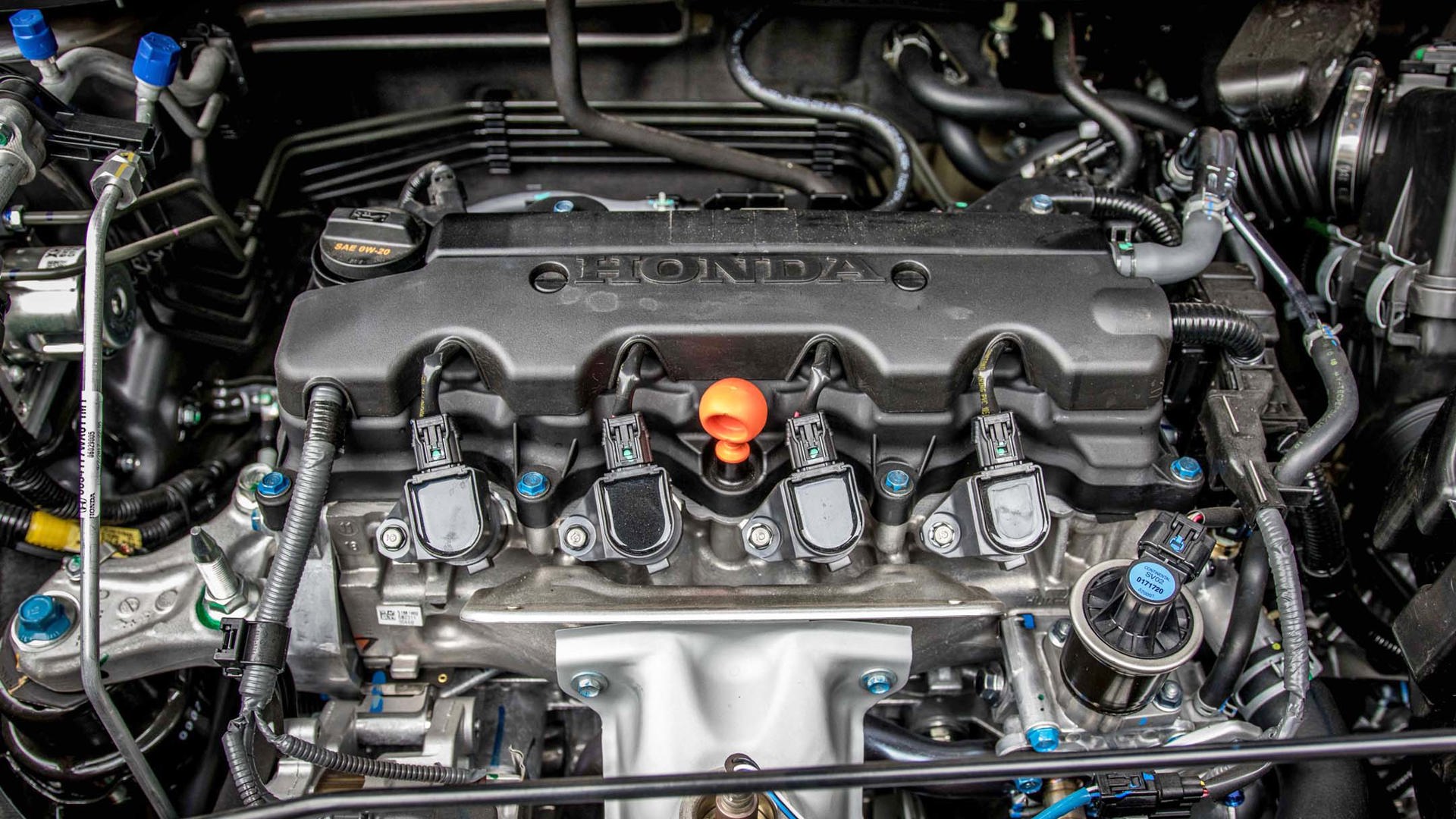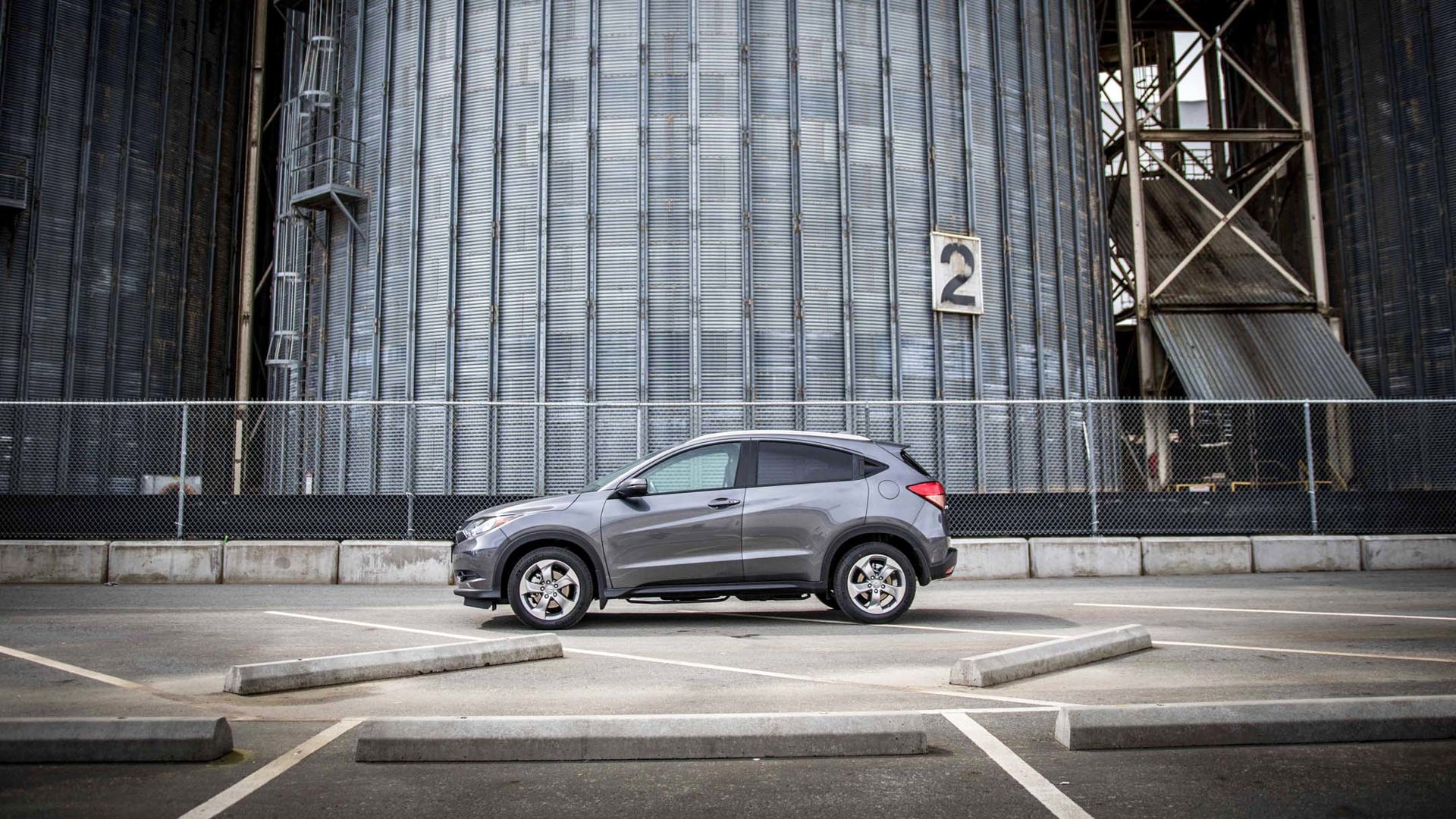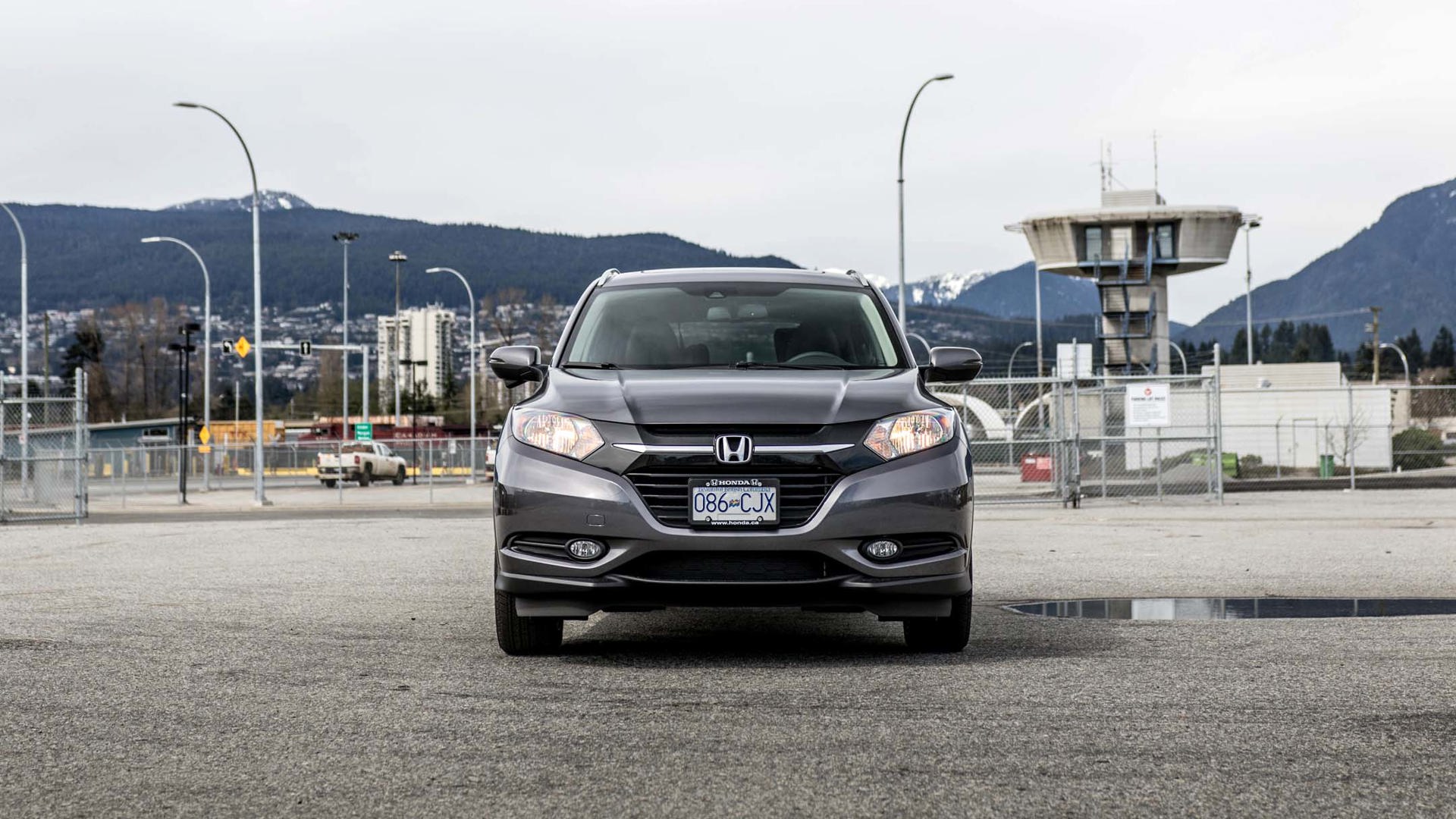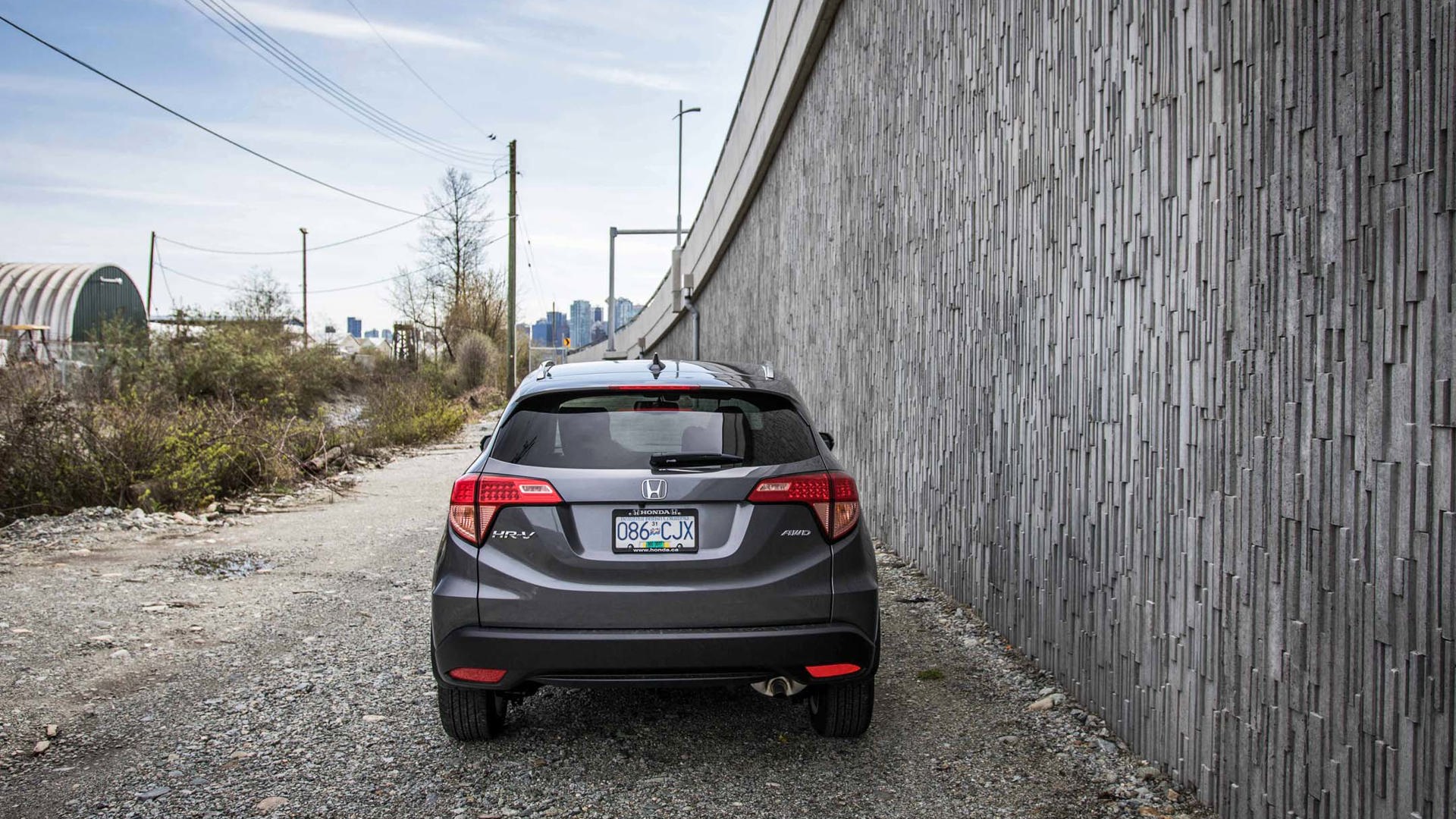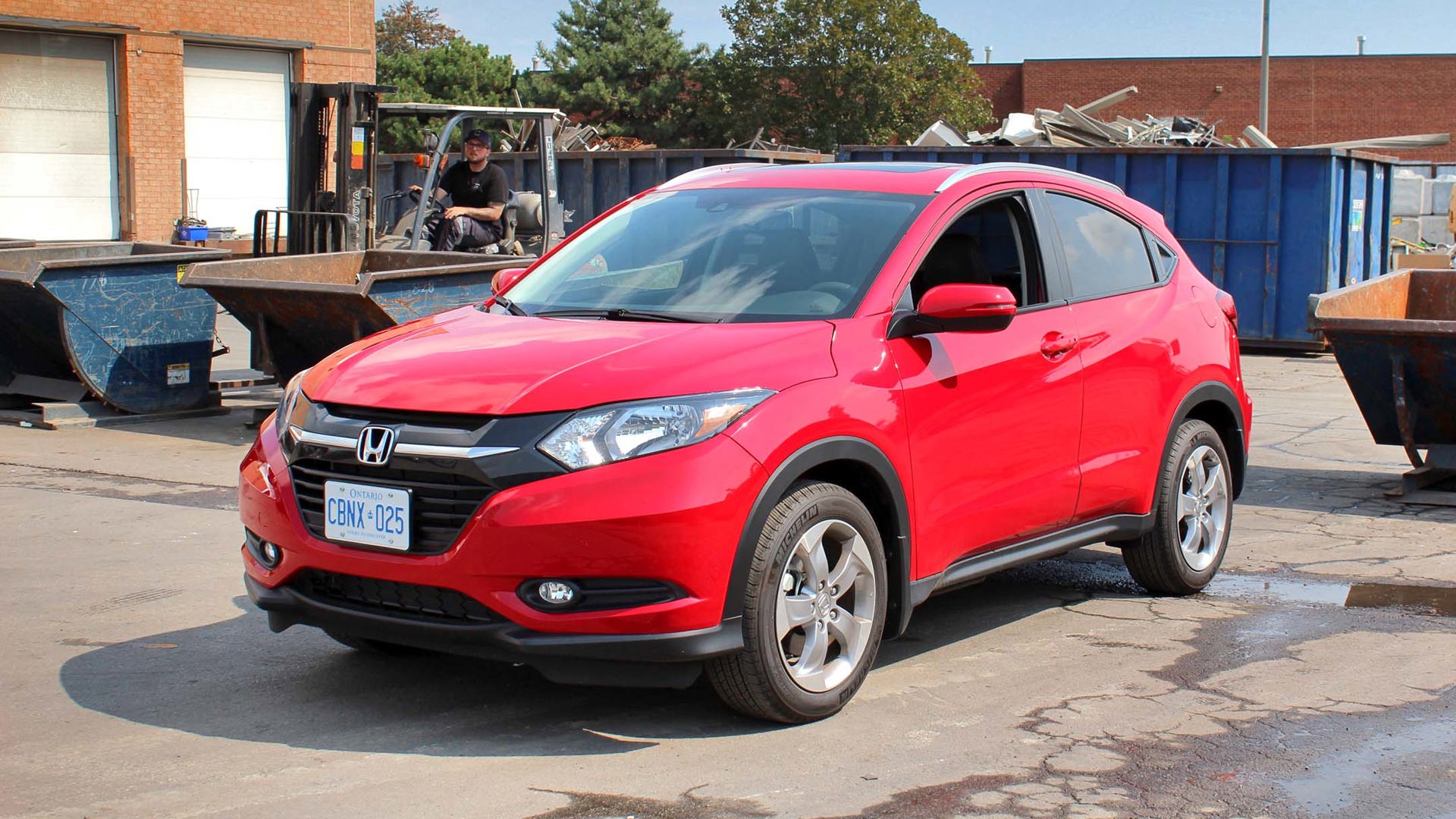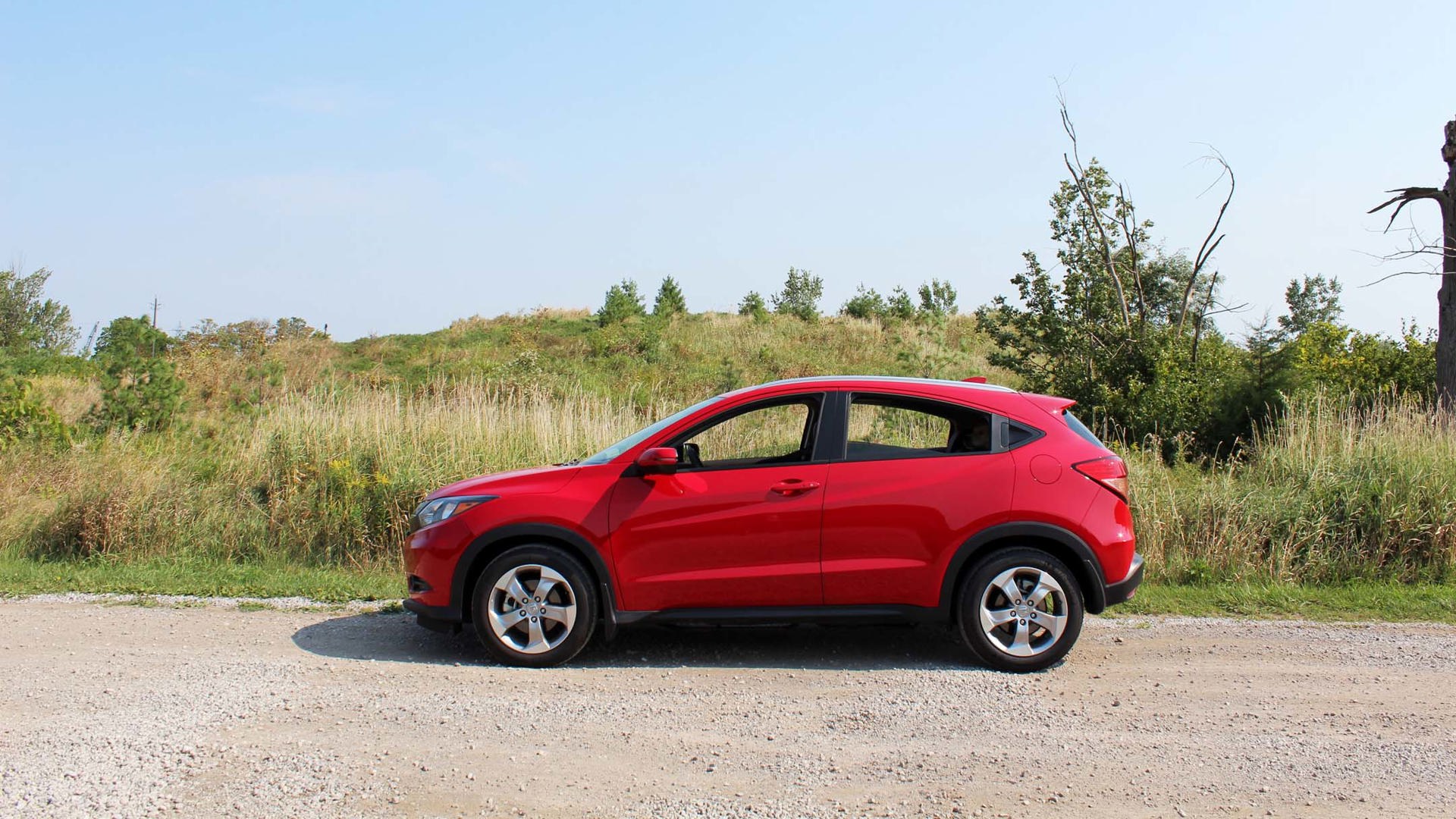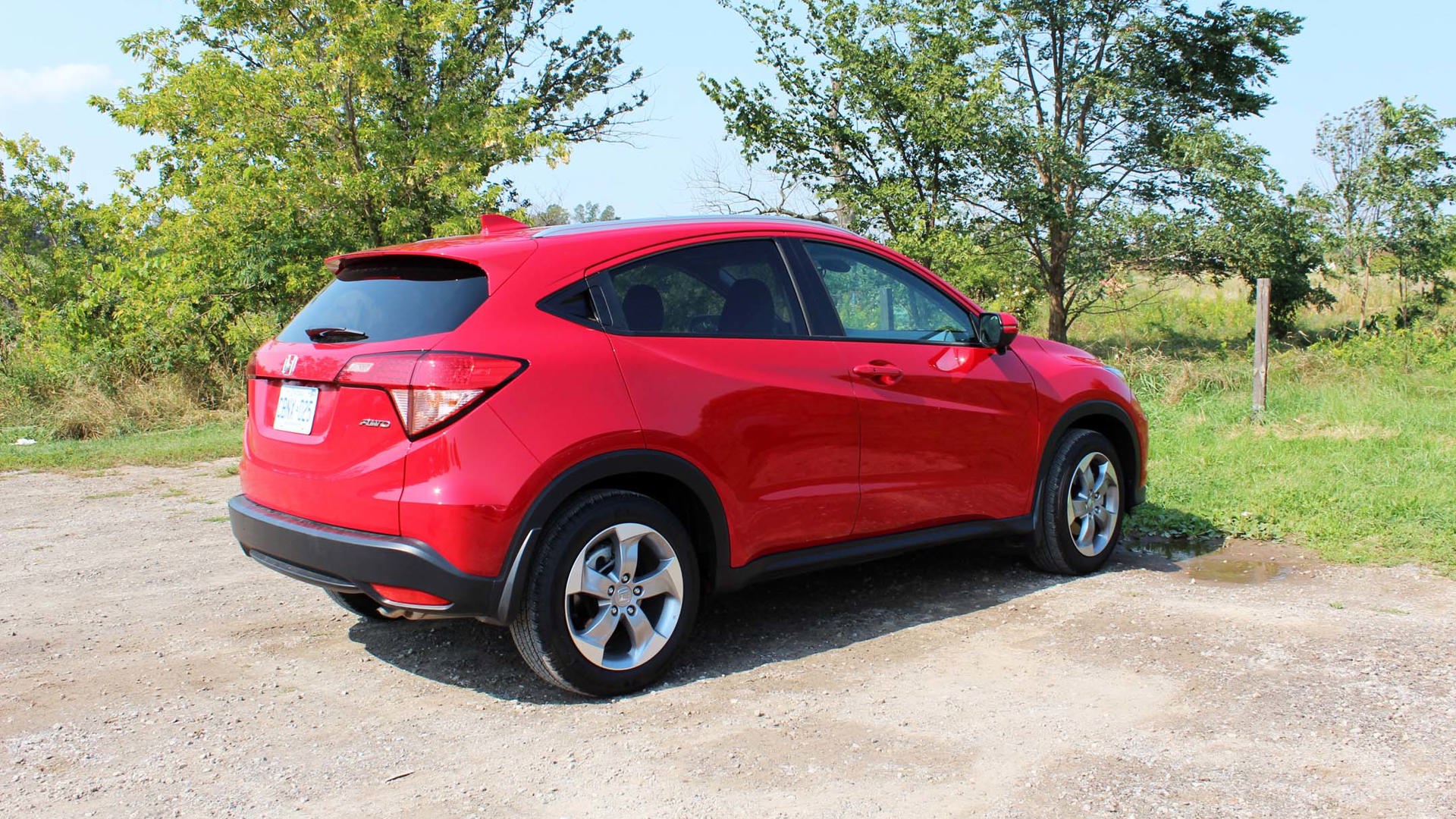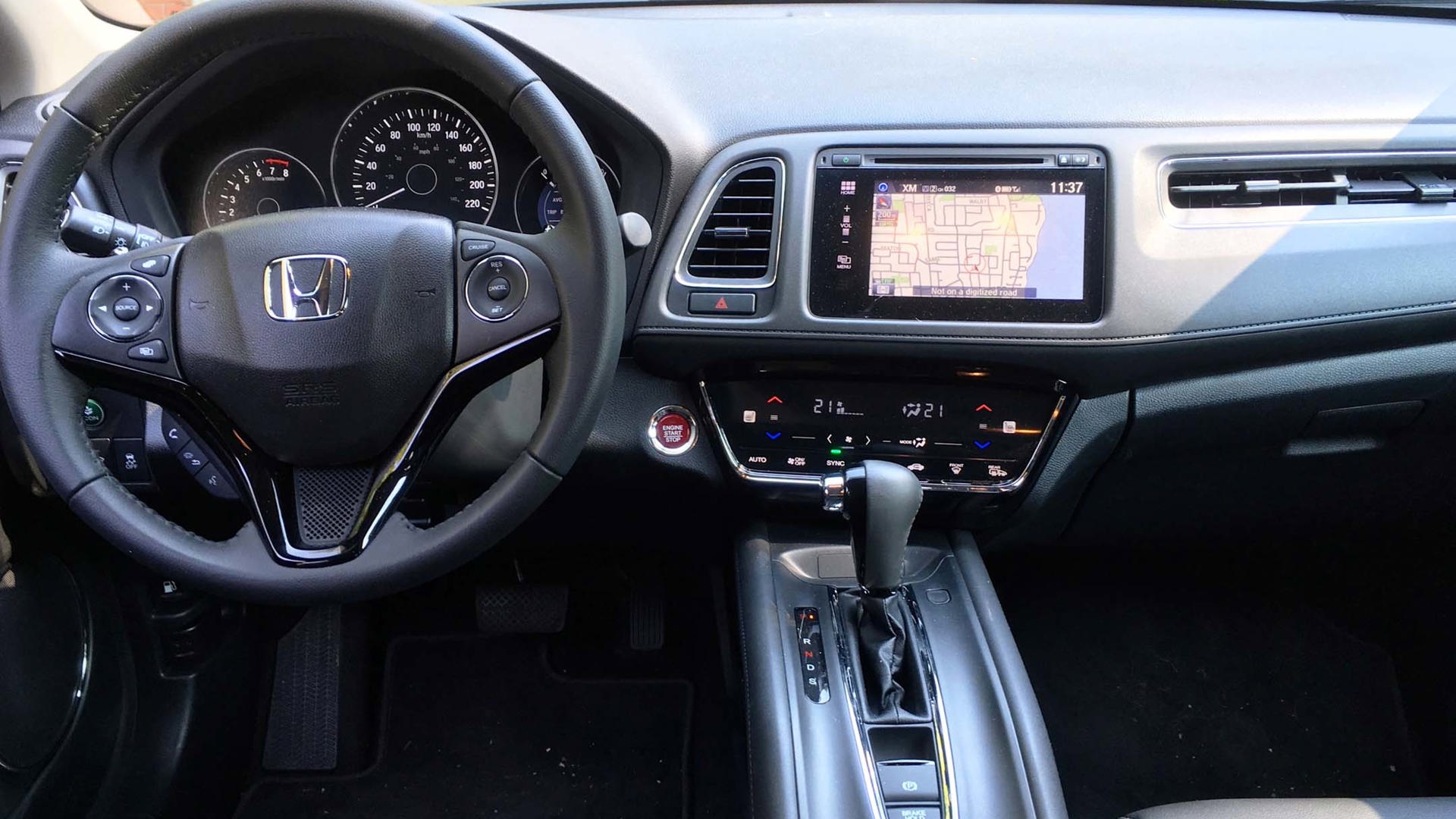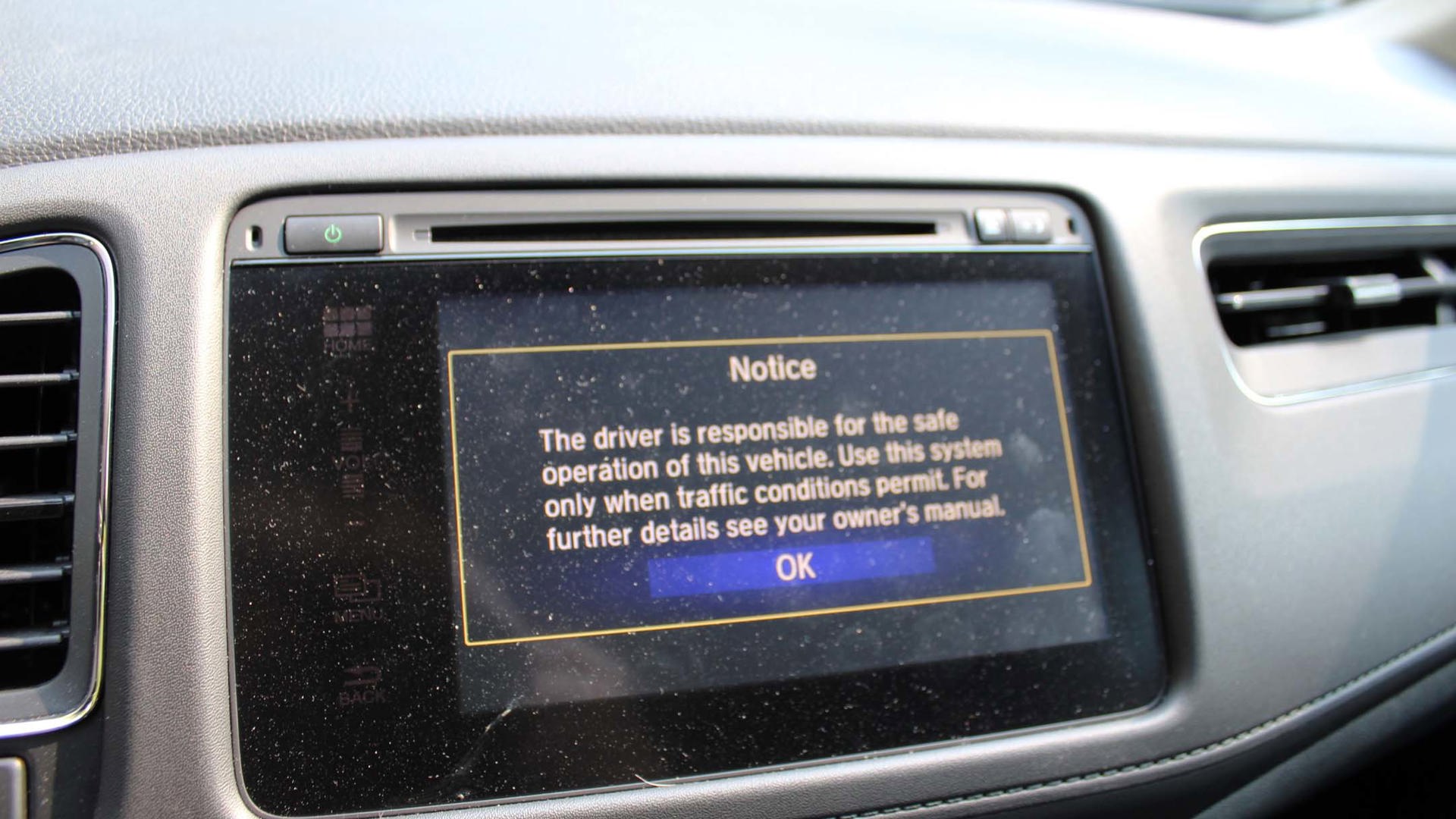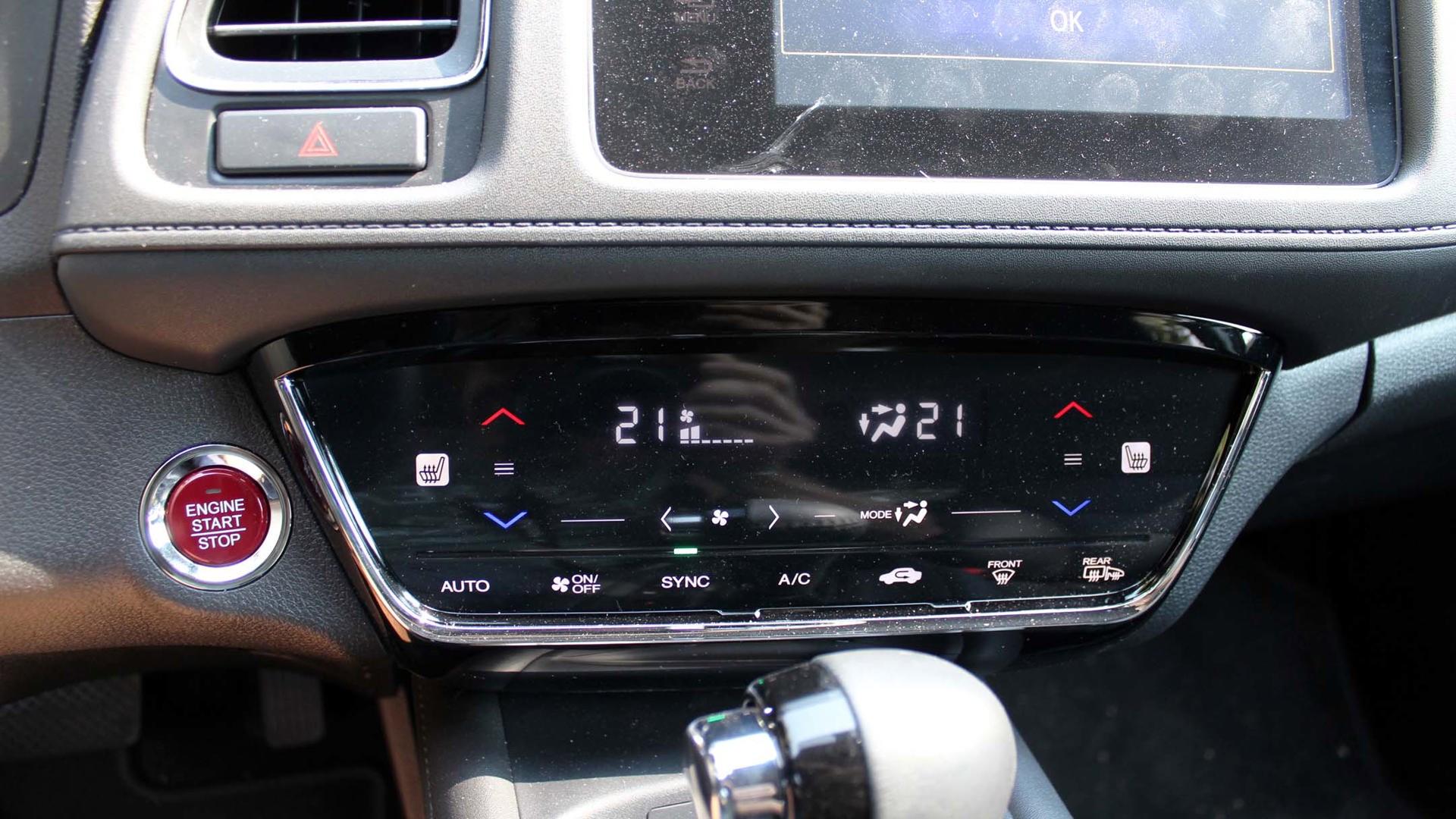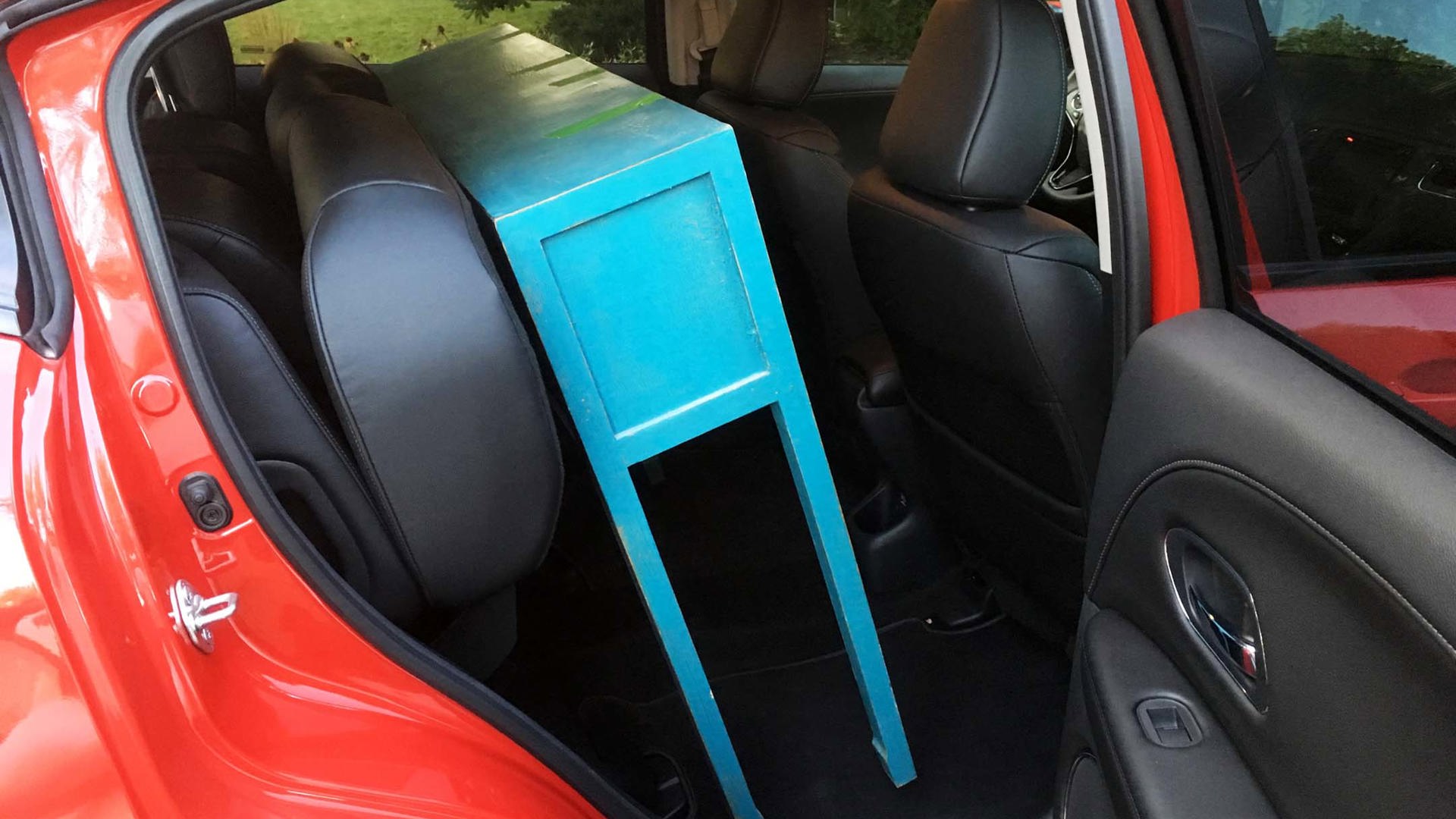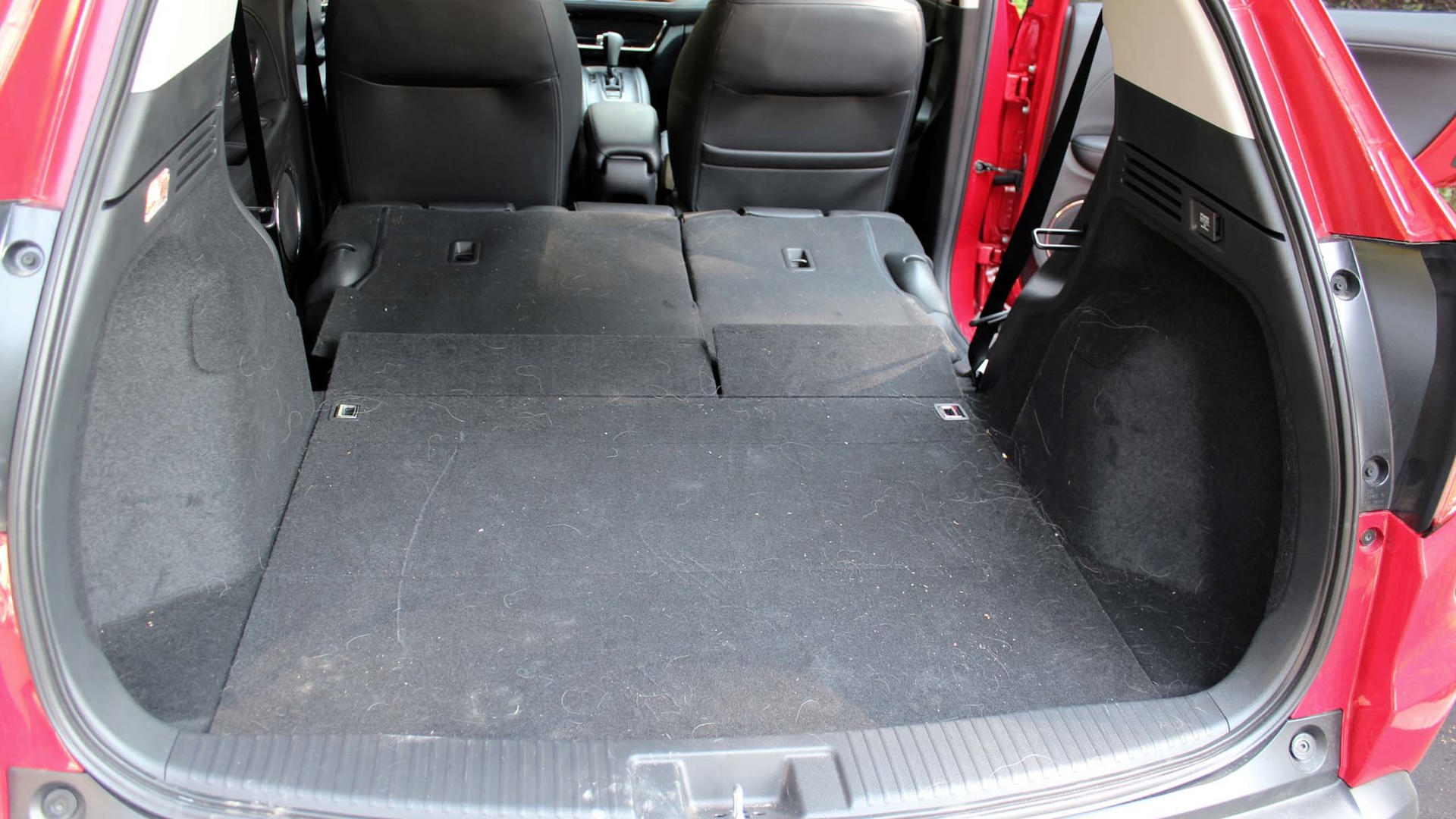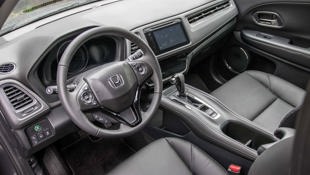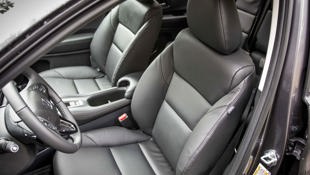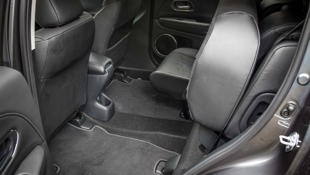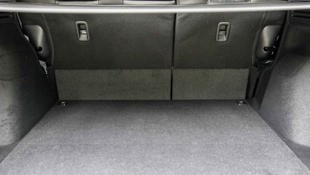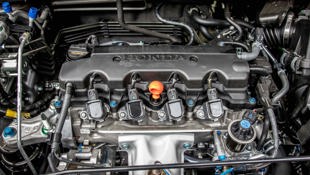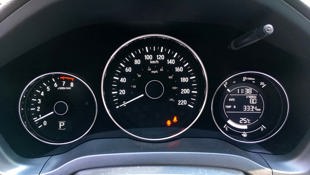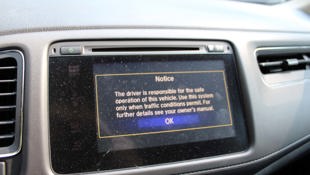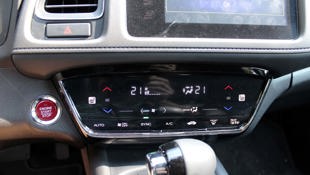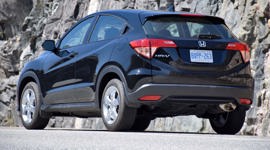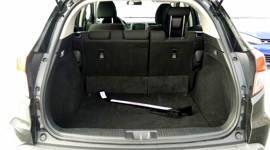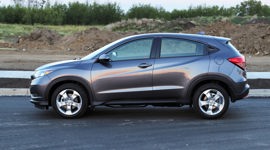Vehicle Type
Subcompact crossover
History/Description
The Honda HR-V launched in 2015, giving the popular CR-V crossover a little brother in the automaker’s utility vehicle lineup. Combining sporty styling with coupe-like visual accents, Honda’s expertise at interior packaging for exceptional on-board storage, and numerous driveline and trim-grade options, this model originally hit dealer lots with pricing from under $21,000.
Utilizing a centre-mounted fuel tank for increased cargo space and optimal interior packaging, HR-V offered up a tremendous 1,665 litres of cargo volume with the second-row seats folded down.
Feature content included a space-saving push-button parking brake, Honda’s LaneWatch camera, a “Magic Seat” rear seating setup with seats that fold up or down, automatic lights and wipers, a back-up camera, and full multimedia connectivity.
Competitor test drives may include the Nissan Juke, Chevrolet Trax, Mazda CX-3, Jeep Renegade, and others.
Engines
Available in front- or all-wheel drive (AWD), and in trims including LX, EX, and EX-L Navi, all units came powered by a 1.8-litre four-cylinder i-VTEC engine with 141 horsepower.
The HR-V’s manual transmission was only available in front-drive models.
Honda’s Eco Assist feature was included, and used illuminated trim rings around the instruments that turn green when drivers are operating the HR-V in the most fuel-efficient manner possible. This system is a favourite amongst many owners, who use it as a visual aid to help achieve the best possible fuel economy.
What Owners Like
Owners report a good, sturdy ride that’s comfortable and feels durable on rougher roads, a sporty steering feel, a sporty gearshift feel on models with the manual transmission, excellent mileage, and plenty of space and flexibility for easy adaptation to virtually any job.
What Owners Dislike
Some owners dislike the HR-V’s square cupholders, which work nicely in Narnia, but not so well in the real world where beverages are served in cylindrical vessels. Other gripes include some quirky design elements that aren’t everyone’s bag of chips, and limited front passenger leg and foot space.
Pro Tip: Check the Clutch
Is the clutch in the manual-equipped HR-V you’re considering in decent shape, or has it been burnt out by a previous driver? For best results, assume the clutch needs replacing, until you confirm otherwise. Do this by assessing the clutch action for smoothness, listening for any unwanted sounds while releasing the pedal slowly (in gear, and in neutral), or by having a technician assess the clutch if you’re not sure how.
Further, consider coaxing slippage from a worn clutch by putting the vehicle in first gear, and fully releasing the clutch as slowly as possible, perhaps over a span of about 15 seconds. If the engine fails to stall as the clutch is fully released, it may require replacement. Sustained full-throttle acceleration from low revs up a steep hill (perhaps at 70 km/h in fourth gear), can also coax slippage from a worn-out clutch.
Pro Tip: Diagnostic Scan
Get a diagnostic scan. Most folks only think about having a diagnostic scan, which allows a technician to ‘read’ the vehicle’s computer brain, when they see a Check Engine Light (CEL) – though numerous potential issues can be revealed by this scan, even if those issues don’t cause the CEL to appear. In moments, a diagnostic scan can reveal any of hundreds of possible issues that may not otherwise be apparent.
The Test Drive
Tailgate and Seating
Chances are you’ve gravitated towards the HR-V for its flexibility and easy-to-use cabin, so now’s the time to check and make sure all associated provisions are in proper working order. Open the tailgate, confirming that all releases (on-board, remote, tailgate latch) are in proper working order. Next, apply slight downwards force to the (open) tailgate, to confirm that it stays open on its own. If not, the gas struts that hold it up need replacing to avoid possible cranial tailgate strikes.
Next up, move to the rear seating. Fold both seating segments in every possible direction, ensuring that the seat backs and seat bottoms flip and fold easily, and stay in position. Check the owner’s manual for full operating instructions, and confirm that the seating works as expected. Here’s some more useful reading on possible problems with tailgate latches, if you detect any issue.
The CVT Transmission
Is the CVT transmission in the HR-V you’re considering overdue for servicing, inspection, or a fluid change? Check the owner’s manual maintenance section against all service records to be sure. If this maintenance has been skipped or stretched, the remaining powertrain warranty on the transmission is likely void, and accelerated wear is likely. Buying a used vehicle with a transmission that hasn’t been properly cared for is not advised.
Also, remember, “If in doubt, swap it out!” If you’re unsure when the transmission fluid was last replaced, budget to have this work completed for maximum peace of mind. (Apply the same logic to oil changes and coolant changes for best results.)
Because of the specific equipment and fluid required to service this type of transmission, having any work performed in a dealer setting is best.
Ride Quality and Fluid Leaks
According to this discussion, some owners have reported the need to replace factory-equipped shock absorbers at far earlier-than-expected intervals, possibly due to a manufacturing defect. In some cases, a defective shock absorber may leak fluid onto the ground beneath the vehicle, which may be misidentified as engine oil. Though information is relatively scarce, this issue seems more likely at low mileage, and has been addressed for many owners under warranty.
On a test drive, drive the HR-V down the roughest road you can find, listening carefully for unwanted smacking, banging or clashing sounds from beneath the vehicle. Driving over a speed-bump at various angles, at a low speed, can also coax unwanted noises from the suspension that may reveal this issue. If the suspension in the HR-V you’re considering is making any unwanted sounds, have a technician investigate before you buy.
Mind the Battery
In at least two online discussions (here and here), numerous owners have reported no-start situations from their HR-V’s, possibly on account of a dead battery. This may result from a bad alternator, a poor-quality factory-equipment battery, or unintended parasitic draw from one or more vehicle systems while the ignition is off. A weak or dying battery can also wreak havoc with vehicle systems, including the alarm, climate control, and even AWD. The simultaneous illumination of various warning lights in the instrument cluster is another indicator of battery trouble.
Be on the lookout for the above, and replace the HR-V’s battery with a high-quality unit at the first sign of trouble. Regular use of a battery trickle charger, and ensuring that all available software updates have been applied to the HR-V, can also help fend off problems like this.
Test the A/C
With the HR-V parked, turn on the air conditioner and crank it up. If the system fails to pump sufficiently cold air into the cabin in quick order, inspect the cabin air filter first. Many owners never change this part, which can lead to poor performance or non-functionality if it becomes clogged. If that’s not the case, head to this discussion, where several owners report wonky A/C performance, possibly because of a bad compressor, or an improper refrigerant fill from the factory. Remember that diagnosing and repairing poor air conditioner performance is best left to a professional.
Cabin Water Leaks
Though relatively rare, some owners have reported water leaks, which may cause dampness, puddling, or water staining on the ceiling liner, or footwell carpeting, usually in the front of the vehicle. On your test drive, inspect the ceiling liner for signs of dampness or water staining, and remove the floor mats to confirm the carpeting beneath is dry. If you see evidence of a leak, the likely culprit is a poorly sealed windshield, or a clogged sunroof drain tube (if equipped). Drivers may be able un-clog a blocked sunroof drain tube with a blast of compressed air, or with a little fishing with some weed-whacker string. If in doubt, have a technician investigate, or move to another unit.
Recalls
There’s just one recall. You can check if it applies to the unit you’re considering by entering its VIN on the Honda website.
Verdict
Thankfully, most of HR-V’s most commonly reported problems are easy to identify on a test drive, and easily addressed by a technician. Though the possibility of battery and air conditioner trouble dull the appeal slightly, the HR-V has a mostly happy group of owners who appreciate its economical versatility. Buy with confidence after completing the above checks, and have a Honda technician inspect the vehicle fully during a pre-purchase inspection (PPI), on your dime, for best results.
Safety Ratings
IIHS: results here
NHTSA: 5/5 Stars
